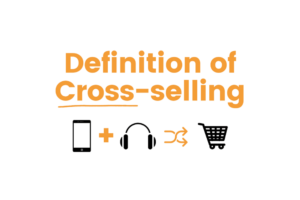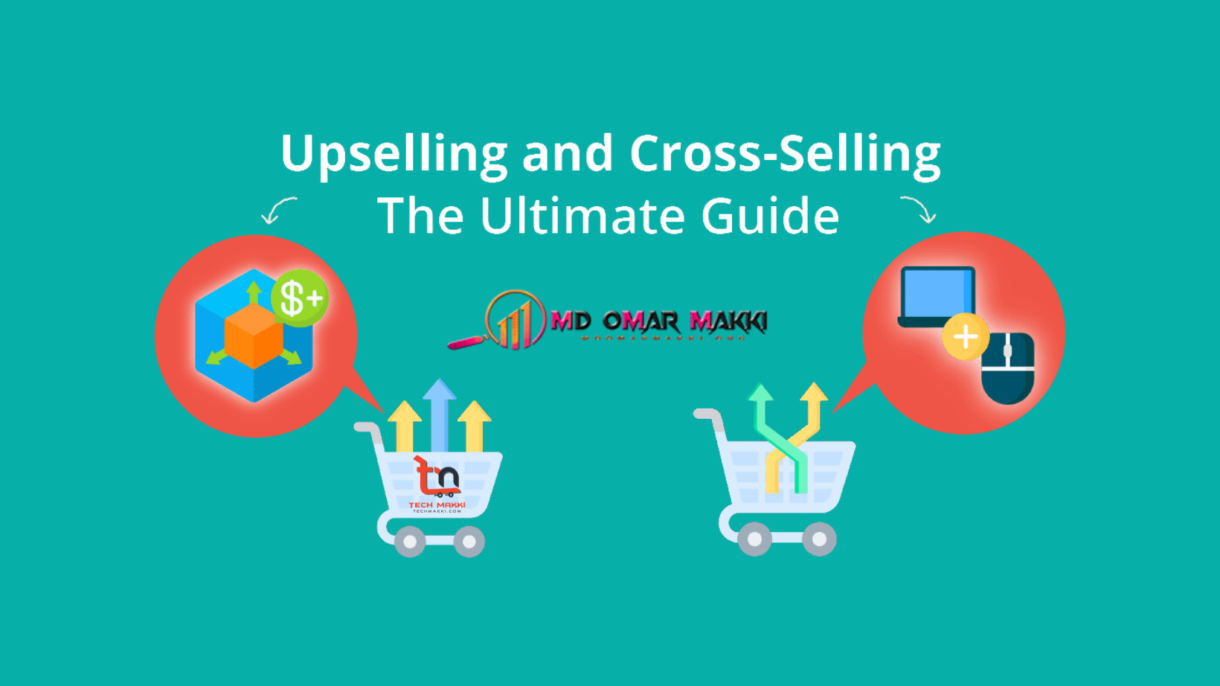Mastering Upselling and Cross-Selling: Benefits, Strategies, and Real-Life Examples
In the fast-paced world of business, companies are always on the lookout for strategies to maximize their revenue and enhance customer satisfaction. Two of the most effective techniques in this regard are upselling and cross-selling. These methods not only boost profits but also help in building stronger relationships with customers. But what exactly are upselling and cross-selling, and how can they be leveraged to their full potential?
What is Upselling?
Upselling is the practice of encouraging customers to purchase a higher-end product than the one they initially intended to buy. This could mean offering a premium version of a product or an upgrade that adds value to the customer’s purchase.
Common Examples of Upselling
One of the most common examples of upselling is seen in the technology industry. For instance, when a customer is about to purchase a smartphone, the salesperson might suggest a model with more storage or additional features, highlighting the benefits of spending a bit more for an enhanced experience.
Another example can be found in the hospitality industry, where hotels often upsell guests on room upgrades, offering larger suites or rooms with better views for an additional fee.
What is Cross-Selling?
Cross-Selling involves recommending related or complementary products to the customer, often based on their current purchase. The goal is to increase the overall value of the sale by adding items that the customer might find useful or desirable.

Common Examples of Cross-Selling
Retailers like Amazon are masters of cross-selling. When you’re browsing an item, you’ll often see a section that says “Customers who bought this also bought…” followed by a list of related products. This tactic encourages customers to add more items to their cart, increasing the total sale amount.
Another classic example is found in fast-food chains. When you order a burger, the cashier might ask if you’d like to add fries or a drink to your meal. This simple question often leads to a larger order and more profit for the business.
Benefits of Upselling
Increased Revenue
One of the most obvious benefits of upselling is the potential for increased revenue. By persuading customers to opt for a more expensive product or service, businesses can significantly boost their average transaction value.
Improved Customer Satisfaction
When done correctly, upselling can lead to improved customer satisfaction. By offering a better product or service that genuinely meets the customer’s needs, you’re providing them with greater value, which can lead to a more positive experience.
Enhanced Customer Loyalty
Customers who are satisfied with their purchase and feel they’ve received good value for their money are more likely to return. Upselling can help build long-term customer loyalty, turning one-time buyers into repeat customers.
Benefits of Cross-Selling
Maximizing Customer Value
Cross-selling is an excellent way to maximize the value of each customer. By suggesting additional products that complement their purchase, you’re increasing the overall value they receive, which can also lead to higher satisfaction.
Strengthening Customer Relationships
Cross-selling can strengthen customer relationships by showing that you understand their needs and can offer relevant products. This personalized approach can build trust and make customers feel valued.
Driving Repeat Purchases
Cross-selling can also encourage repeat purchases. For example, if a customer buys a camera and you cross-sell them a high-quality lens, they might be more likely to return to your store for future photography needs.
Upselling vs. Cross-Selling
Key Differences
While both upselling and cross-selling aim to increase sales, they differ in approach. Upselling focuses on encouraging customers to buy a more expensive version of a product, whereas cross-selling involves offering additional products that complement the original purchase.
When to Use Each Strategy
Understanding when to use upselling or cross-selling is crucial. Upselling works best when a customer is considering a product that has multiple tiers or versions, while cross-selling is ideal when there are complementary products that enhance the original purchase.
5 Effective Upselling Strategies
1. Offering Premium Versions
One of the simplest upselling strategies is to offer a premium version of the product the customer is considering. Highlight the added features, better quality, or extended warranty that comes with the higher-priced option.
2. Bundling Products
Bundling is another effective upselling strategy. By offering a package deal that includes additional features or services for a slightly higher price, you can persuade customers to spend more.
3. Highlighting Features and Benefits
When upselling, focus on the features and benefits that the more expensive option offers. Explain how these will meet the customer’s needs better than the basic version.
4. Providing Time-Sensitive Offers
Creating a sense of urgency can be a powerful motivator. Offer time-sensitive deals on higher-end products, encouraging customers to make a quick decision to upgrade.
5. Using Personalized Recommendations
Utilize customer data to make personalized upsell recommendations. Tailored suggestions based on their purchase history or browsing behaviour can increase the likelihood of a successful upsell.
5 Effective Cross-Selling Strategies
1. Complementary Products
The most straightforward cross-selling strategy is to offer products that complement the customer’s current purchase. For example, if they’re buying a laptop, suggest a protective case or a mouse.
2. Frequently Bought Together Suggestions
This strategy, popularized by e-commerce giants like Amazon, involves showing customers what other shoppers have bought along with the product they’re considering. It’s a subtle yet effective way to increase sales.
3. Email Marketing Campaigns
Use email marketing to cross-sell products to your existing customers. Personalized emails that suggest complementary products based on their previous purchases can drive additional sales.
4. Loyalty Programs
Incorporate cross-selling into your loyalty program by offering points or discounts on related products. This encourages customers to explore additional items they might not have considered otherwise.
5. Point-of-Sale Recommendations
Train your sales staff to make cross-sell recommendations at the point of sale. A simple suggestion at checkout can lead to an increase in the total sale amount.
How to Implement Upselling and Cross-Selling in Your Business
Understanding Customer Needs
The foundation of successful upselling and cross-selling lies in understanding your customers’ needs. Use customer data, feedback, and purchase history to tailor your offers to their specific preferences.
Training Your Sales Team
Equip your sales team with the skills and knowledge they need to effectively upsell and cross-sell. This includes understanding the products, knowing the right time to make suggestions, and using persuasive language.
Utilizing Technology
Leverage technology to support your upselling and cross-selling efforts. CRM systems, AI-driven recommendation engines, and data analytics can provide valuable insights that help you make the right offers to the right customers.
Challenges of Upselling and Cross-Selling
Avoiding Overwhelming the Customer
One of the biggest challenges is ensuring that your upsell and cross-sell efforts don’t overwhelm the customer. Too many suggestions or overly aggressive tactics can lead to a negative experience.
Ensuring Relevance
Relevance is key to successful upselling and cross-selling. Make sure that the products you suggest are genuinely useful to the customer and complement their original purchase.
Balancing Profit and Customer Satisfaction
While the goal is to increase sales, it’s important not to lose sight of customer satisfaction. Upselling and cross-selling should enhance the customer’s experience, not detract from it.
Real-Life Examples of Upselling
Example 1: Apple’s Upsell with iPhones
Apple is a master of upselling. When customers buy an iPhone, they’re often presented with options to choose models with more storage or additional features, making it easy to spend more for a better experience.
Example 2: Amazon’s Upsell on Prime Membership
Amazon uses upselling to encourage customers to sign up for Prime membership. The benefits of faster shipping, exclusive deals, and access to streaming services make it a tempting offer for regular shoppers.
Real-Life Examples of Cross-Selling
Example 1: McDonald’s Cross-Selling Fries with Burgers
A classic example of cross-selling is McDonald’s famous “Would you like fries with that?” This simple question has boosted sales for decades by encouraging customers to add a side to their meal.
Example 2: Amazon’s Cross-Selling with “Frequently Bought Together”
Amazon’s “Frequently Bought Together” feature is another brilliant example of cross-selling. By showing customers related items, they increase the likelihood of additional purchases.
Conclusion
Upselling and cross-selling are powerful strategies that, when used correctly, can significantly boost your revenue and enhance customer satisfaction. By understanding the differences between the two and implementing the right strategies, you can create a win-win situation for both your business and your customers.
FAQs
- What is the difference between upselling and cross-selling?
Upselling encourages customers to buy a more expensive version of a product, while cross-selling suggests additional complementary products. - How can I train my team to upsell and cross-sell effectively?
Provide them with product knowledge, teach them when and how to make suggestions, and practice using persuasive language in a way that aligns with customer needs. - Are upselling and cross-selling applicable to all businesses?
Yes, these strategies can be adapted to fit nearly any business model, from retail to services. - What are common mistakes to avoid in upselling and cross-selling?
Avoid overwhelming the customer with too many options, suggesting irrelevant products, or using overly aggressive tactics that can lead to a negative experience. - How do I measure the success of upselling and cross-selling strategies?
Track metrics such as average transaction value, customer satisfaction scores, and repeat purchase rates to gauge the effectiveness of your strategies.


4 replies on “Mastering Upselling and Cross-Selling: Benefits, Strategies, and Real-Life Examples”
Dario August 20, 2024 at 3:10 pm
WOW just what I was searching for. Came here by searching for this
Pat August 22, 2024 at 9:40 pm
I’d like to find out more? I’d care to find out more details.
Erik August 23, 2024 at 7:58 am
We are a group of volunteers and starting a new scheme
in our community. Your web site provided us with valuable information to
work on. You have done an impressive job and our entire community will be grateful to you.
Anitra August 23, 2024 at 3:34 pm
My partner and I absolutely love your blog and
find nearly all of your post’s to be exactly I’m looking for.